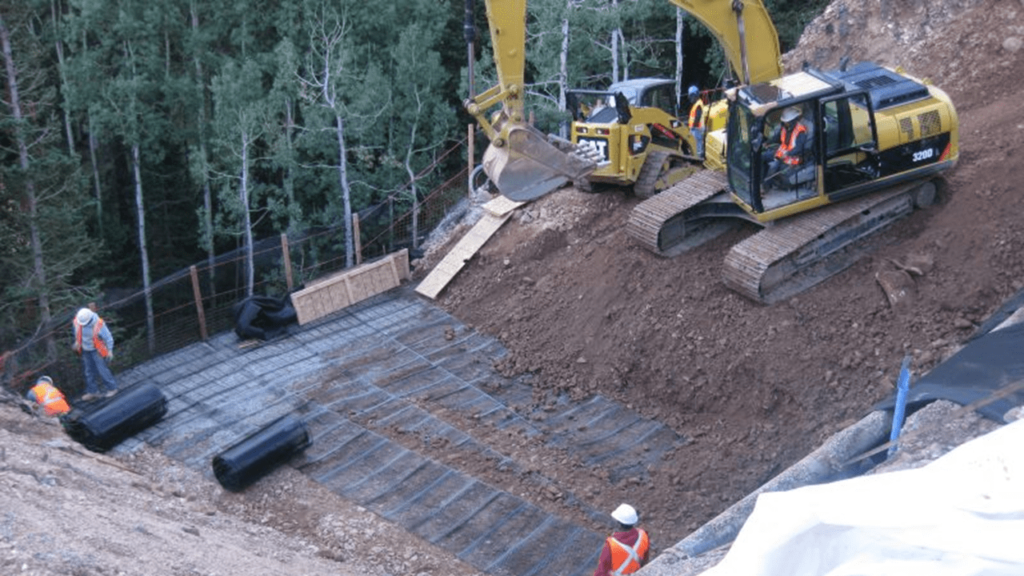Get involved in ASTM International Committee D35 on Geosynthetics
June 24th, 2021
By Gary T. Torosian, Chief Operating Officer, Geocomp/GeoTesting Express ASTM is the abbreviation for the American Society for Testing and Materials. ASTM International is a consensus standard writing organization that is involved with almost every type of material engineers work with, including soil, rock, geosynthetics, concrete, steel and plastic. If you’ve worked on a tunnel, highway, deep […]
ASTM International cancels all in-person standards meetings through February 2021
November 2nd, 2020
In light of COVID-19 and ongoing safety concerns for members and staff, ASTM International announced today that all scheduled in-person January and February 2021 standards development meetings (including independent meetings) have been canceled. In July, ASTM International announced the cancellation of all in-person meetings for the remainder of 2020. These decisions are based on several […]
New standard will support measuring quality of cement in geosynthetic composite mats
June 29th, 2020
A new ASTM International standard will aid engineers and specifiers looking to understand the quality and strength of cement contained in geosynthetic cementitious composite mats (GCCMs). ASTM’s geosynthetics committee developed the new standard, which is needed to allow for a consistent industry method for the application of compression strength in GCCMs. GCCMs are flexible, concrete-impregnated […]
A guide for specifying drainage geocomposites
April 1st, 2020
By Lisa L. Damiano and Eric S. Steinhauser In September 2017, ASTM International released its Standard Guide for Specifying Drainage Geocomposites (ASTM D7931). The standard provides a guideline for calculating engineering properties related to drainage geocomposites, specifically allowable flow rate, associated reduction factors and shear strength properties. In basic terms, it codified design procedures so […]
Proposed ASTM geocells standard aims to support soil stability in road projects
January 23rd, 2020
A proposed ASTM International standard will provide guidance for using geocells—open-celled geosynthetics that help hold soils and rocks in place—in roadway projects. Geocells are commonly used in road construction, earth retention and other construction projects. According to ASTM International member Eli Cuelho, there is currently no standard for using geocells in geotechnical and roadway projects. […]
ASTM releases new geosynthetic cementitious composite mat standard
March 27th, 2018
The American Society for Testing and Materials (ASTM) released a standard March 26, 2018, for geosynthetic cementitious composite mats (GCCM), a new family of materials that can help control erosion, protect slopes and berms, and line ditches and culverts. The new standard (D8173) identifies proper layout, installation and hydration procedures for GCCM. It also describes […]
Suits steps down and Othman named co-editor of ASTM’s Geotechnical Testing Journal
December 15th, 2017
On Dec. 15, 2017, the American Society for Testing and Materials (ASTM International) announced L. David Suits is stepping down as co-editor of the Geotechnical Testing Journal (GTJ) and that Majdi Othman will assume the role of co-editor of GTJ in January 2018. Suits has been an active member of ASTM since 1978 and has […]
Notification to ASTM D35 members
April 1st, 2017
During 2016, representatives of ASTM International and the ASTM D35 Committee on Geosynthetics were in discussion with the American Association of State Highway and Transportation Officials’ (AASHTO) Subcommittee on Materials (SOM), Technical Section 4e (TS 4E), regarding their current revision efforts on Standard Specification for Highway Applications, AASHTO M288. TS 4e includes 26 state DOT […]
Oh no! The GCL got wet! Now what?
February 1st, 2017
Authors’ note: The conditions This project started in central California in July 2014, and we watched the weather forecasts on the nightly news and we were calm. A few weeks later, the project is running longer than expected, and now we are watching the Weather Channel and reading Weather Underground and Accuweather with more interest […]
 TEXTILES.ORG
TEXTILES.ORG




